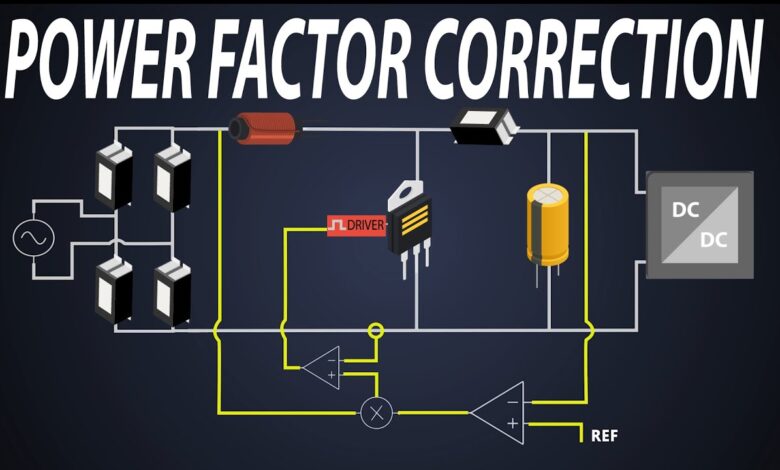Demystifying Power Factor Correction: Everything You Need to Know

Electrical systems sometimes feel like a complex web of jargon and mathematical equations. Among these, power factor correction is a term often thrown around but seldom understood. What is it exactly, and why should you care? In simple terms, power factor correction is like giving your electrical system a tune-up for optimal performance. Intrigued? Let’s break it down.
What is the Power Factor?
The Basics
Power factor measures how effectively electrical power is converted into sound work output. In an ideal world, all the electrical power would be efficiently restored to work. However, in the real world, some energy is lost due to inefficiencies in electrical systems.
Real Power vs. Reactive Power
Electric power often combines real power (measured in watts) and reactive power (measured in VAR or Volt-Amps Reactive). Real power is the part you use to run equipment, while reactive power essentially “circulates” within the system and does no practical work.
Imagine a glass of beer: the liquid beer represents real power, and the foam at the top represents reactive power. The perfect brew would be all beer and no foam—similarly, an ideal electrical system would be all real power and no reactive power.
Why Should You Care About Power Factor Correction?
Cost Savings
A low power factor means you need to utilise electrical power efficiently, which can lead to higher energy bills. Utilities often charge penalties for poor power factors, and correcting it can translate to tangible cost savings.
Improved System Efficiency
By correcting the power factor, you increase the efficiency of your electrical system. This often means less heat generation, which improves reliability and extends your equipment’s lifespan.
Environmental Benefits
Efficient electrical systems use less energy for the same amount of work. By optimising your power factor, you contribute to reducing the overall demand on the power grid, which is a win for sustainability.
How is the Power Factor Corrected?
Capacitors to the Rescue
The most common method for power factor correction involves adding capacitors to the electrical circuit. Capacitors quickly store and release electrical energy, compensating for the lagging or “wasted” reactive power. This is essential because many electrical devices, like motors and transformers, induce a phase difference between current and voltage, leading to reactive power generation. This reactive power does no practical work but still adds to the load on the supply, causing inefficiencies and increased costs.
Capacitors act as reactive power generators, compensating for the lagging power factor by providing leading reactive power. In essence, capacitors act as a “bank” that supplies reactive power to the circuit when needed and absorbs it when it is not, thereby helping to balance the system. This not only helps optimise the system’s power consumption but also reduces the burden on the power supply network, resulting in overall cost savings and increased system efficiency.
Furthermore, by reducing the amount of reactive power drawn from the supply, the capacitors help reduce the apparent power (a combination of natural and reactive power), reducing the current flowing through the electrical distribution system. This current reduction helps reduce losses due to resistance in the wires, resulting in additional energy savings.
Sizing and Placement Matter
The effectiveness of power factor correction capacitors largely depends on their size and where they are placed in the circuit. They are too small, and they will make little of an impact. Too large, and they could create an over-correction, causing a new set of problems.
A Job for Experts
While tackling power factor correction as a DIY project may be tempting, it is usually best left to professionals. Incorrect implementation can lead to system instability or even damage. Professionals have the knowledge and experience to assess your system, determine the correct size and type of capacitors needed, and identify the optimal locations for their installation.
Additionally, professionals can safely integrate power factor correction equipment into your existing system and ensure compliance with local regulations and standards. Moreover, improper installation of capacitors can lead to resonance in the design, which can cause over-voltages and over-currents, potentially damaging your equipment and even causing safety hazards. Also, calculating power factor correction may involve complex mathematics and knowledge of the electrical system’s intricacies, making it a job better suited for an expert.
Therefore, while it may seem straightforward, power factor correction involves multiple considerations that make it a job best done for professionals.
Final Thoughts on Power Factor Correction
Power factor correction may seem daunting, but it’s essential for residential and industrial settings. The good news is that once you grasp the fundamentals, it becomes a manageable aspect of your electrical system that can bring significant benefits. By paying attention to the power factor, you’re tuning your electrical system to be more efficient, cost-effective, and environmentally friendly.
So, the next time someone brings up power factor correction, you won’t just nod along ambiguously. You’ll know precisely what they’re talking about—and why it’s essential.



